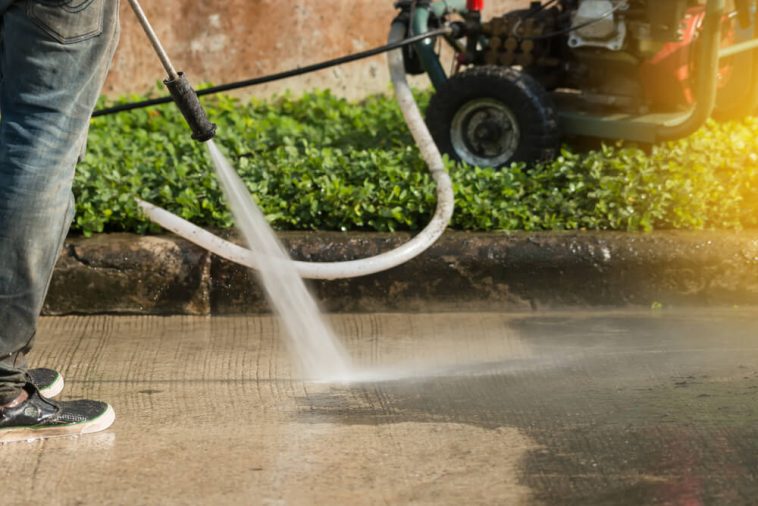Mold spotted in the bathroom? Undoubtedly, you are not alone. Mold is a common problem, especially in bathrooms, which provide the ideal combination of heat, moisture, bacteria, dust, and (sorry) human skin for mold to thrive. It can occur regardless of whether your home is new or old, and even the most diligent bathroom deep cleaners may struggle to keep it at bay. Despite the difficulty of prevention, there are steps you can take to eliminate mold in a bathroom, including the use of commercial products and do-it-yourself techniques. Flyttevask bergen
Various forms of bathroom mold
Before discussing treatment, let’s examine what you may be experiencing.
In bathrooms, several distinct types of mold typically develop:
Stachybotrys chartarum (also known as black mold)
The aspergillus talaromycosis fungus (formerly referred to as Penicillium )
Cladosporium
In terms of frequency and danger, these molds vary, with black mold being both the least common and the most dangerous, although no type of bathroom mold is considered rare.
There are distinguishing characteristics between these various types of mold, especially in terms of color, but testing to determine the type can be costly and largely unnecessary. Experts advise that you should always treat and eliminate mold in a bathroom (or anywhere else in your home) before determining its species. Fortunately, the same techniques can be utilized regardless of the type of mold.
How to eliminate mold from a bathroom
You have several options when it comes to eliminating mold. Commercial treatments and natural, do-it-yourself remedies are frequently tried first, followed by a professional treatment if these methods fail.
If you’re dealing with a significant mold issue, if you suffer from asthma or another respiratory condition that makes mold exposure more dangerous for you, or if you’d rather not deal with the issue yourself, you can call in the experts. According to HomeAdvisor, the price range for professional mold removal is between $1,117 and $3,329, with an average cost between $1,117 and $3,329. The price can range anywhere from $50 to over $6,000, with an average cost between $1,117 and $3,329.
Consider attempting to resolve the mold issue in your bathroom on your own to save money. Here is the procedure.
Option 1: Use commercial products for mold removal
When attempting to eliminate mold from a bathroom, store-bought cleaners can be incredibly useful.
You’ll need:
Antifungal spray
Spray of distilled white vinegar bleach
Ventilation is essential. During this process, you may wish to wear a mask and rubber gloves, operate the bathroom fan, and/or open a window for your own safety.
Start by applying an antifungal spray liberally to the affected area. Make sure it’s an antifungal spray and not just a standard shower or bathroom spray, as the former has properties designed to combat mold spores.
Follow the instructions on the bottle, which may instruct you to leave the spray on for a certain amount of time before removing it. When the mold must be eliminated, use a toothbrush or sponge to scrub it away.
Next, you will need to clean the area with a bleach spray to eliminate any lingering stains and prevent future spore growth. (If you do not have a spray, you can create one by mixing one part bleach with ten parts water in a spray bottle.) Allow the bleach to sit for 5 to 10 minutes, and then scrub the area with a toothbrush or sponge.
The final step is to apply white vinegar, which has additional antifungal properties, to the affected area. After using the bathroom, ensure that it is well ventilated and that any residual moisture is removed.
Option 2: Create a solution yourself
If you’d prefer not to use chemical cleaners, you may be able to eliminate bathroom mold with household items that you already have. This may be the best option if you have young children or pets, or if you have a sensitivity to chemical products; however, it may not be as effective at sanitizing the area and preventing future mold growth.
You’ll need:
Baking soda or hydrogen peroxide
white distilled vinegar
Make a solution of 1 part hydrogen peroxide to 1 part water in a spray bottle, or fill the spray bottle with water and add 1 tablespoon of baking soda. Both hydrogen peroxide and baking soda are naturally antifungal, so you can use whichever one you have on hand.
The mixture should be sprayed on the affected area and allowed to sit for 5 to 10 minutes. Then, scrub the surface with a toothbrush or sponge, and rinse with clean water. Finally, apply white vinegar to the area and allow it to dry naturally.
Managing mold under caulk
Mold growth under caulking, as in a shower or bathtub, is a common (and frustrating) problem. This mold is just as visible but more difficult to reach, and you may have to remove the caulk to get to it and then re-caulk when you’re done.
If this is the case, use needle-nose pliers and a utility knife to cut and scrape away the caulk as necessary, and then treat the mold with one or more of the aforementioned techniques. When you’re finished and the area is completely dry, apply a new, clean layer with a caulking gun. (Ensuring that the area is completely dry is essential, because if you trap moisture under the caulk you’ll end up with the same issue again.)
Preventing mold from returning
Mold cannot be completely eliminated from a bathroom, as mold spores are ubiquitous and any environment with sufficient heat and moisture is likely to support their growth.
Nevertheless, there are a number of things you can and should do to mitigate mold problems and possibly even prevent their occurrence.
1. Eliminate moisture. Do not permit water to remain on any surface for too long. Use a towel and/or squeegee to remove any remaining water from your shower or bathtub, and keep your exhaust fan running as needed to keep the air dry.
Clean your bathroom regularly. When there is less dust and bacteria in your bathroom, mold has less food to grow. Regularly clean the area with antibacterial and antifungal commercial products or their non-toxic alternatives.
Repair all leaks. A faucet that drips one drop of water per minute will drip 1,440 times per day, which will almost certainly result in mold growth. You should fix leaks to reduce your water bill regardless, but consider mold mitigation as an additional reason to make this a priority.
Questions frequently asked about bathroom mold
As a homeowner or renter, it is likely that you will need to eliminate mold from a bathroom at some point. And while it is certainly an unpleasant and unsightly issue to deal with, it does not indicate that you are not taking care of your living space. Here are some quick answers to some frequently asked questions regarding mold in your bathroom, including how to determine if it is the dreaded black mold.
Is mold in the bathroom a health hazard?
Mold can pose a threat to your health under certain conditions, particularly if you have a mold allergy or respiratory condition. Headaches, dizziness, rashes, coughing, and a scratchy throat are all symptoms of a negative mold reaction.
How can you determine the type of mold you have?
You can purchase a do-it-yourself mold identification kit. This isn’t always necessary, but it could be a good idea if removal techniques aren’t working, as it may indicate that you need to take a more targeted approach.
What are the telltale signs of black mold?
Black mold is typically dark greenish-black or completely black and emits a musty, stagnant odor. Black mold can grow anywhere that moisture can become trapped, including your shower, bathtub, and faucet, as well as your floors, walls, and ceilings.
Why does mold keep returning?
Even if mold is eliminated from a bathroom, there is no assurance that it will not return. The best thing you can do is to adhere to the advice in the preceding section and treat mold thoroughly when it appears. Flyttevask bergen

